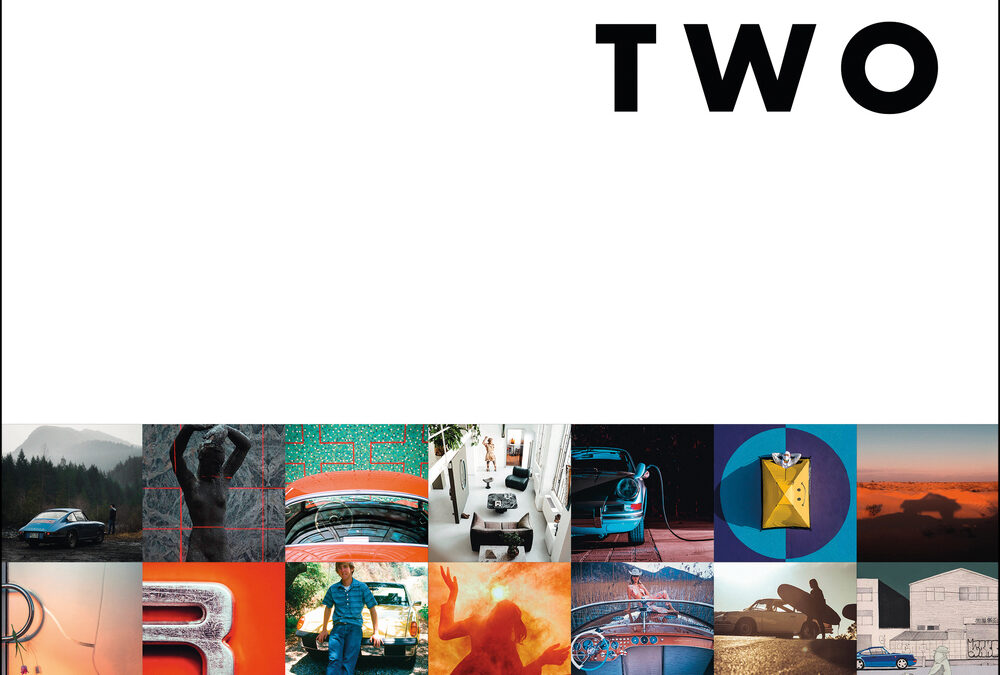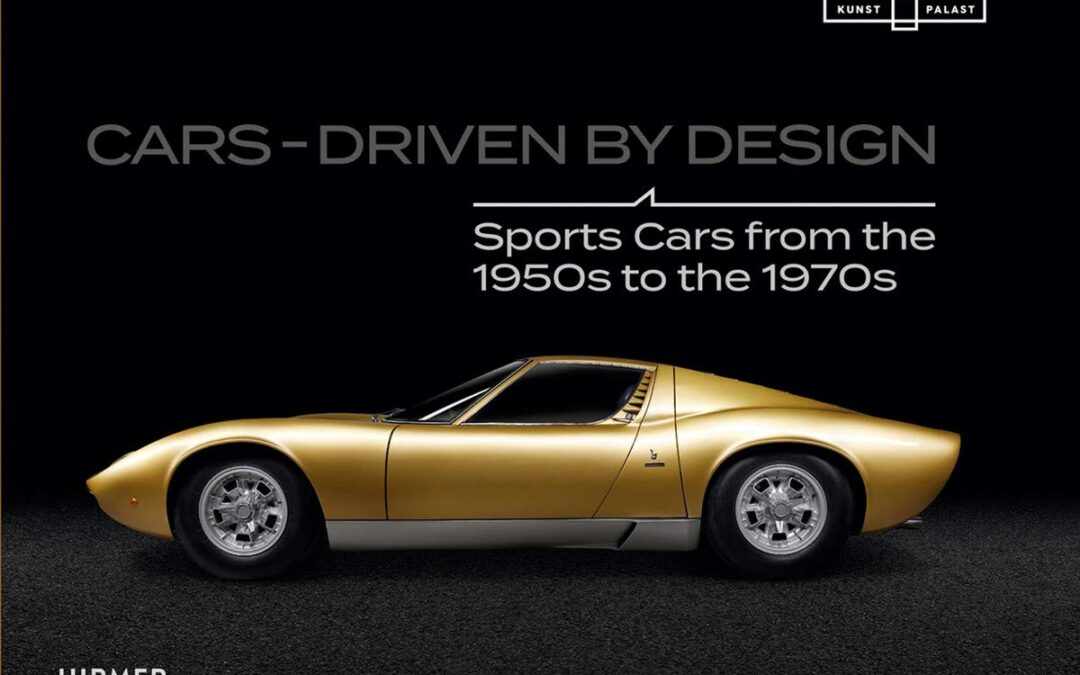
As a design object beyond its practical purpose, the automobile has left an indelible mark on the world we live in. There is scarcely another everyday item which has been designed in a more sophisticated and inventive manner and which offers a larger projection area. This can be seen with particular clarity in the sports car of the 1950s, ’60s, and ’70s, which are fast, beautiful, eccentric, and innovative. In recent decades, these coveted collector’s items have attained cult status, and have come to be widely regarded as dream cars for eternity. In an exciting journey through time, this volume pays homage to a selection of exclusive sports cars by legendary manufacturers—including Porsche, Ferrari, and Jaguar—showing them to be artworks in their own right. Essays, biographies, and brilliant color photographs shed light on the sports car’s unparalleled unity of form, technology, design, and emotions.
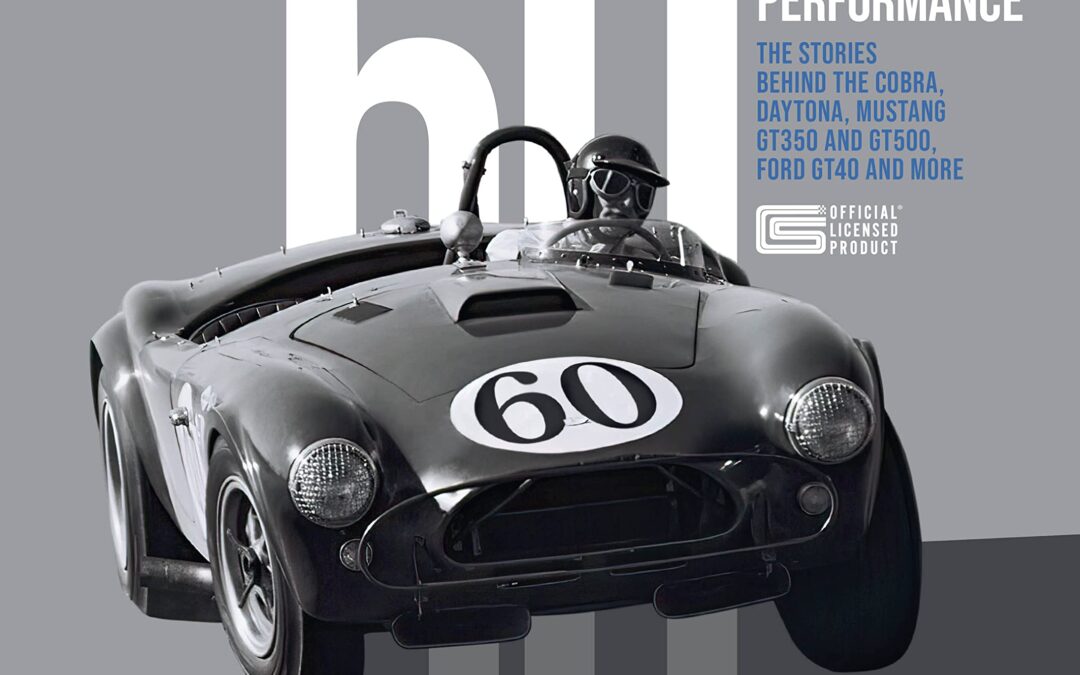
Six Decades of Shelby performance—from the first Shelby AC Cobra to today’s Mustang Shelby GT500!
A bad heart forced Carroll Shelby, one of the top racing drivers of all time, to retire in 1960. But that didn’t stop the lanky Texan from continuing to make history. He launched Shelby American in 1962 with the creation of the brilliant Ford-powered AC Cobra, soon to dominate both U.S. and international sports car racing. Shelby’s winning ways soon led to Ford seeking Shelby’s team of “hot rodders” help to make the Ford GT program a success. It worked. Shelby and Ford soon stunned the motorsports world by winning Le Mans and dominating other venues from 1966 to 1969 with the GT40. Fifty-three years later the legendary first Le Mans win of 1966 would form the basis for the acclaimed film Ford Versus Ferrari. As if the Cobra, Daytona Coupe, and GT40 were not enough, this small team of hot rodders, fabricators, and race mechanics also created the Shelby Mustang GT350 in 1965, and the GT500 two years later. Shelby American was nothing short of lightning in a bottle from 1962-1970.
Shelby American 60 Years of High Performance covers all of these early triumphs, following the proceedings from a small shop in Venice, California, to sprawling digs at LAX all the while developing new road cars, running a top race team, and giving privateer racers the cars they needed to win. Get to know Shelby, as well as the innovators who surrounded him, including designer Peter Brock, genius engineer Phil Remington, “Mr. GT350” Chuck Cantwell, and a roster of top drivers that included Ken Miles, Bob Bondurant, Dan Gurney, Bruce McLaren, Denny Hulme, A.J. Foyt, Mario Andretti, and more.
Authors Colin Comer and Rick Kopec, leading Shelby historians, follow the Shelby story through Carroll’s post-Ford relationship with Dodge, including his roles in the giant-killing, pocket-rocket Shelby Charger, GLH (“Goes Like Hell”), and GLH-S cars along with a slew of other Shelby-ized machines including his role in the birth and development of the menacing Dodge Viper.
The story of the late Carroll Shelby and the company he founded is a classic tale of ingenuity, grit, and perseverance. Illustrated throughout with rare period imagery and modern color photography, Shelby American 60 Years of High Performance is the ultimate tribute to Shelby American and the team that made it all happen.
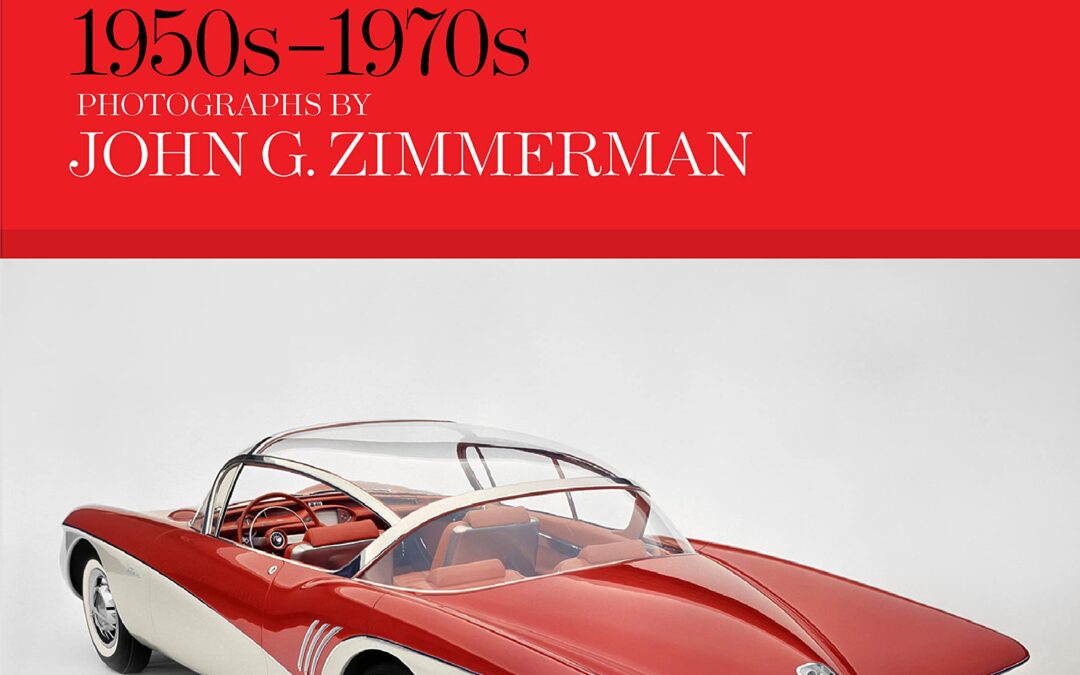
A glorious and nostalgic celebration of a defining period in American car culture—the 1950s to the 1970s, the golden age of Detroit’s icons of the road—when automobile design was at its peak and the car itself was synonymous with a vision of success in America.
Auto America offers a compelling look at three decades (the 1950s, ’60s, and ’70s) of America’s fascination with the automobile. At a time when self-driving vehicles and climate change are transforming driving around the world, John G. Zimmerman’s pictures capture the optimism and even utopianism of a beloved period in American car culture.
Many of Zimmerman’s photographs were originally taken for Life, Time, and Sports Illustrated magazines and highlight diverse aspects of America’s auto industry at its zenith; they feature not only iconic cars of the era, which Zimmerman chronicled comprehensively at car shows and in studio assignments throughout the period, but also a behind-the-scenes look at the people who designed, built, collected, exhibited, and raced them.
With more than 200 photographs and drawing on the John G. Zimmerman Archive’s collection—including his best-known photographs of Fords, Chryslers, and GMs in their heyday alongside ephemera, tear sheets, and outtakes from his assignments—the book celebrates the automobile’s central place in American culture during those decades when the timeless silhouettes of classic cars ruled the roads.

It’s not a truck or a car—it’s a Jeep!
Developed in the early 1940s as a light reconnaissance vehicle for the U.S. Army, the Jeep successfully transitioned from military usage to public use with the arrival of the CJ-2A in 1945. Many more CJ models followed, which cemented the Jeep as one of the most successful and longest-tenured models when the CJ-10A was discontinued in 1986.
With more than 1.5 million Jeeps sold, a restoration book for these vehicles has been desperately needed. Author Mark Altschuler of restoremyjeep.com showcases his decades of experience in this must-have restoration book that features component restoration of all aspects of the timeless Jeep. Step-by-step procedures document the disassembly, restoration, and reassembly of your favorite models, while color illustrations depict exactly what you’re wanting to see as you address your project.
How to Restore Your Jeep 1941–1986 is not only a handy tool that addresses the total restoration of your prized machine but it will likely also be one of the most affordable tools that you will purchase for your project.

Pre-order now for early 2023 delivery
The story of rediscovering a very important historic vehicle and its conservation whereby the car has been treated as a work of art, saving as much as possible of the amazingly well preserved original. Drawing on art and archaeological techniques, prominent Italian collector Corrado Lopresto decided to clean only half the car, leaving the other half frozen in time. In the uncleaned half, Lopresto preserved everything (including the dust) under a thin layer of transparent matt lacquer. The cleaned part has not been restored either, but has been saved by retouching in such a way that the original aspects are not affected. This book “Alfa Romeo SZ Coda Tronca: The Art of Conservation” captures the rediscovery of this historic vehicle and the way it has been preserved – a fascinating tale of art meeting automobile. A very significant car in terms of aerodynamics and body design, this is the specific car on which the evolution from the Coda Tonda version of the Alfa Romeo Giulietta SZ to the Coda Tronca was executed
- Hidden for the best part of five decades, the car was rediscovered in the United States in a perfectly preserved state
- Acquired by the legendary Italian collector Corrado Lopresto, one half of the car has been conserved, and the other half has received light restoration to preserve the car in as original a state as possible, making it a unique experiment and example of conservation processes and concepts
- Not only did it win the Best Preserved Award at the Concorso Eleganza Villa d’Este in 2016, it also headlined the special exhibition of historic vehicles at UNESCO, Paris
- No doubt one of the most significant cases of a barn find, which has been preserved in the best possible way, thereby providing an example for the future
- Hard cover with dust jacket

This monogram about the de Havilland DH91 Albatross tells the full story of one of the de Havilland’s most beautiful aircraft. The book was long overdue. It gives the reader an insight in the development, test work, and operation of the de Havilland DH91 Albatross, of which only seven were built. The appearance of the aircraft left an everlasting impression on the viewers and all fell in love with the beautiful lines of this aircraft. It was unbelievable that in the time of the upcoming all-metal American airliners that this wooden aircraft could make such an impression. The Albatross had no peers in elegance thanks to his outstanding aerodynamic design.
The first flight of the prototype was made on May 20, 1937. It did not enter service with Imperial Airways Ltd. until November 1938 and it was not met with too many positive criticisms. In many ways the de Havilland DH91 Albatross was an outstanding aerodynamic design, and in particular the method of fuselage construction was a completely novel in its day. The DH91 Albatross would eventually disappear from the skies in July 1943, but its story is worthwhile telling.
The book is well-illustrated with many photographs, color profiles, three-side drawings, and new cutaway drawings of both the passenger as mail version.

Volume 2 of the Encyclopedia 727 about one of the most famous and important airplanes in history, and Boeing’s first bestseller, best-selling commercial jet for more than two decades. The Boeing 727 is an aviation icon! Its grandiose story is told in detail in Encyclopedia 727. For the first time in history, an entire encyclopedia dedicated to a single plane!
The 6 volumes will tell the complete story in 2,640 pages, with more than 3,200 photoreal profiles and exclusive to the 727 Encyclopedia, showing the plane in every painting in the airlines that have operated it in the more than 59 years of use of the model until today. All books have digital content with access via QR code and the sections will receive updates on the data of the aircraft in operation, which can be downloaded in PDF and printed, keeping your 727 Encyclopedia up to date.
In volume 2 you will learn about the different models of the 727, with details of each variant of the factory Boeing 727 and the modifications received to extend its operational life, testimonials from pilots and other professionals about the trijet, the most unusual stories that happened with the model , an account of all the accidents involving the device and more: the 727 in the media, flight simulators, statistics, preserved planes, in addition to the production list and a complete chronology of the model’s history. Finally, a section dedicated to plastic models and collectors, with the 727 at scale.
Volume 2 has 376 pages.
Sections of Volume 2: 1. MODELS & DESIGNS, 2. THE 727 AND ITS FRIENDS, 3. FANTASTIC STORIES, 4. ACCIDENTS, 5. THE 727 IN THE MEDIA, 6. THE 727 AT SCALE, 7. THE 727 IN THE SIMULATORS, 8 The 727 IN STATISTICS, 9. THE 727 PRESERVED, 10. PRODUCTION LIST, 11. CHRONOLOGY.
Details: more than 100 photos (some exclusively colorized for the book), more than 259 photoreal profiles of 727’s, 370 artwork, maps, infographics, 71 tables and 149 QR codes with external content, including videos, documents and miscellaneous content about the trijet.
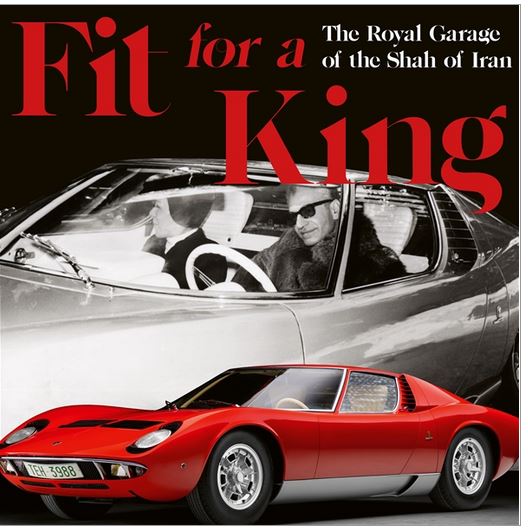
Iran has a monarchical history spanning over 2,500 years. Almost all of Iran’s Kings have had vast unchecked powers as they built, and lost, some of the largest empires in history. These vast powers led to Iran’s Kings being referred to as “Shahanshah” meaning literally the “King of Kings”.
With the advent of the automobile, Iran’s Shahanshahs procured some of the world’s most renowned automobiles for their royal garages starting from the first car to be imported to Iran, a Gardner-Serpollet 10 hp, to the famed Maserati 5000GT “Scia de Persia”, specially-ordered and owned by Iran’s last Shah, Mohammad Reza Shah Pahlavi.
In his broad spanning work, Iranian automotive historian Borzou Sepasi traces the royal garage of each Iranian Shah, starting with Mozaffar ad-Din Shah Qajar in 1900, who despite importing the first car, forbade drivers from going faster than carriages, and all the way up to the 1979 revolution. In an important postscript, the fate of many of the cars covered in the book following the end of monarchical rule in Iran, are shown.
The book also intertwines many of the historical events in Iran with the cars of the period, highlighting the special role these vehicles played. Dalton Watson is proud to present this little-known period of unique automotive history to its readers.
230mm x 280mm
-
- Hard cover with dust jacket
- 564 pages
- 1,046 photographs
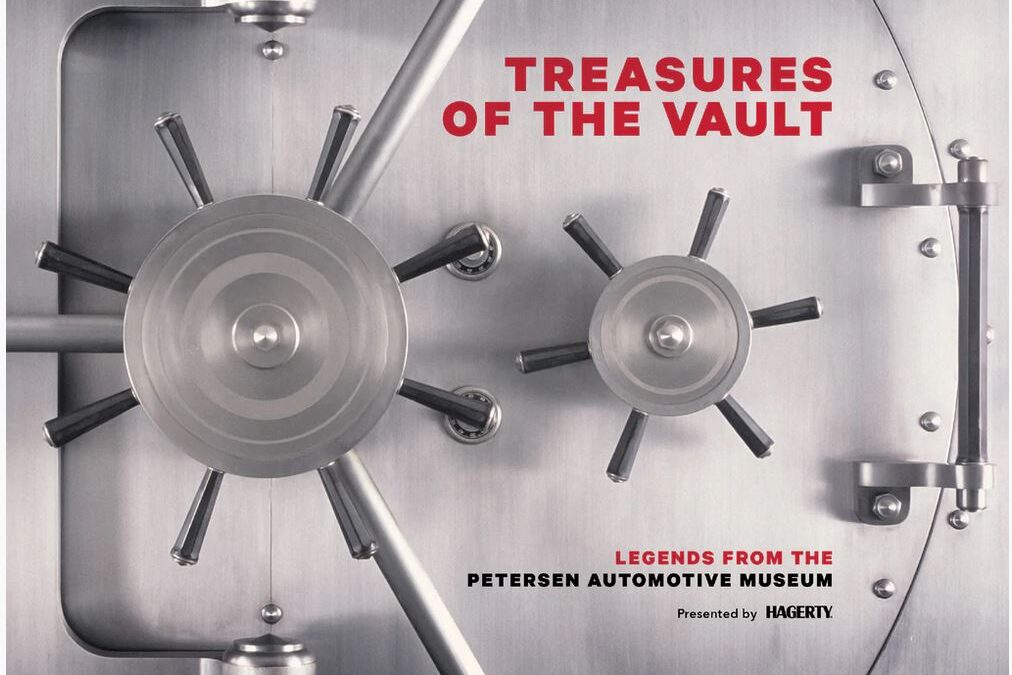
Ever wonder what has been hiding in plain sight in the vaults of one of the world’s most celebrated automotive museums? The Petersen Automotive Museum’s newly published book entitled, “Treasures of the Vault Legends from the Petersen Automotive Museum presented by Hagerty” will reveal everything! With detailed descriptions of more than 50 important cars and enough quality images to satisfy even the most detail-oriented connoisseurs, it is both a treasure trove of information and a visual delight. Its painstakingly compiled research by Petersen Automotive Museum curators and historians and professional photography by Ted7 guarantee that it will serve as an important permanent reference work for automobile aficionados regardless of their automobile-related passions and areas of special interest.
- Softcover.
- 11 x 8.5 inches.
- Full color.
- 152 pages.

On December 22, 1964, at a small, closely guarded airstrip in the desert town of Palmdale, California, Lockheed test pilot Bob Gilliland stepped into a strange-looking aircraft and roared into aviation history.
Developed at the super-secret Skunk Works, the SR-71 Blackbird was a technological marvel. In fact, more than a half century later, the Mach 3–plus titanium wonder, designed by Clarence L. “Kelly” Johnson, remains the world’s fastest jet.
It took a test pilot with the right combination of intelligence, skill, and nerve to make the first flight of the SR-71, and the thirty-eight-year-old Gilliland had spent much of his life pushing the edge.
In Speed one of America’s greatest test pilots collaborates with acclaimed journalist Keith Dunnavant to tell his remarkable story: How he was pushed to excel by his demanding father. How a lucky envelope at the U.S. Naval Academy altered the trajectory of his life. How he talked his way into U.S. Air Force fighters at the dawn of the jet age, despite being told he was too tall. How he made the conscious decision to trade the security of the business world for the dangerous life of an experimental test pilot, including time at the clandestine base Area 51, working on the Central Intelligence Agency’s Oxcart program.
The narrative focuses most intently on Gilliland’s years as the chief test pilot of the SR-71, as he played a leading role in the development of the entire fleet of spy planes while surviving several emergencies that very nearly ended in disaster.
Waging the Cold War at 85,000 feet, the SR-71 became an unrivaled intelligence-gathering asset for the U.S. Air Force, invulnerable to enemy defenses for a quarter century.
Gilliland’s work with the SR-71 defined him, especially after the Cold War, when many of the secrets began to be revealed and the plane emerged from the shadows—not just as a tangible museum artifact but as an icon that burrowed deep into the national consciousness.
Like the Blackbird itself, Speed is a story animated by the power of ambition and risk-taking during the heady days of the American Century.

Freewaytopia: How Freeways Shaped Los Angeles explores how social, economic, political, and cultural demands created the web of freeways whose very form―futuristic, majestic, and progressive―perfectly exemplifies the City of Angels.
From the Arroyo Seco Parkway, which began construction during the Great Depression, to the Century Freeway, completed in 1993, author Paul Haddad provides an entertaining and thought-provoking history of the 527 miles of roadways that comprise the Los Angeles freeway system.
Each of Los Angeles’s twelve freeways receives its own chapter, and these are supplemented by “Off-Ramps”―sidebars that dish out pithy factoids about Botts’ Dots, SigAlerts, and all matter of freeway lexicon, such as why Southern Californians are the only people in the country who place the word “the” in front of their interstates, as in “the 5,” or “the 101.”
Freewaytopia also explores those routes that never saw the light of day. Imagine superhighways burrowing through Laurel Canyon, tunneling under the Hollywood Sign, or spanning the waters of Santa Monica Bay. With a few more legislative strokes of the pen, you wouldn’t have to imagine them―they’d already exist.
Haddad notably gives voice to those individuals whose lives were inextricably connected―for better or worse―to the city’s freeways: The hundreds of thousands of mostly minority and low-income residents who protested against their displacement as a result of eminent domain. Women engineers who excelled in a man’s field. Elected officials who helped further freeways . . . or stop them dead in their tracks. He pays tribute to the corps of civic and state highway employees whose collective vision, expertise, and dedication created not just the most famous freeway network in the world, but feats of engineering that, at their best, achieve architectural poetry. And let’s not forget the beauty queens―no freeway in Los Angeles ever opened without their royal presence.
Freewaytopia is part colorful lore, part civic and historical critique, and part homage to the most famous freeways in the world.

As early as 1965, when the MiG-25 interceptor was in the midst of its test program, the Mikoyan Design Bureau started work on an even more capable two-seat interceptor meant to provide adequate protection for the huge expanses of Siberia and the Soviet Far East. Though superficially resembling a MiG-25 with tandem cockpits, the aircraft was soon designated the MiG-31.
Initially dubbed Super Foxbat in the West but soon renamed Foxhound, the MiG-31 first flew on 16 September 1975 and, after a five-year trials program, achieved initial operational capability in 1980. Full-scale deliveries began in 1982 to units covering the Moscow Air Defense Zone, the Arctic and the Far East. One of the effects was that the SR-71s now stayed away from the Soviet borders.
Efforts to improve the Foxhound began right away. In-flight refueling capability was added in 1989 to overcome the problem of inadequate range. Next, the MiG-31B, featuring upgraded avionics and better weapons, entered production in 1990; existing MiG-31s were brought up to the new standard (except for IFR capability) as the MiG-31BS.
The radically improved ‘Generation 4+’ MiG-31M featuring a new WCS and new R-37 ultra-long-range AAMs first flew in 1985 but never entered production because of funding shortages. Today, the MiG-31s remains one of modern Russia’s key air defense assets, and new versions keep appearing. The book gives the complete development and service history of this remarkable aircraft and is richly illustrated with color photos and color artwork throughout.

This new book reveals rare original photos and full manufacturing details of America’s greatest multi-engine combat aircraft flown in World War II. Contents cover building the Flying Fortress from wingtip to wingtip and from the bombardier’s Perspex nose to the tail-gunner’s twin-Browning cannons. Significant aspects of B-17 production include exterior views of each model variant from various angles, all crew stations in each B-17 type (including the entire flight deck), defensive gun turrets used in every B-17 model, fuselage interiors, exteriors, engines, nacelles, and even control surfaces. Factory-original color cutaway drawings as well as reproductions of original specifications sheets and other information-packed documents created by manufacturers during the 1940s are also included for the reader. As a research asset, the book’s appendices feature a detailed survey of every production block of the 12,731 B-17 bombers produced during the war in an unbelievable time span of only three-and-a-half year–an industrial phenomenon unlike any the world had ever seen.
What sets this book apart from all others in the crowded B-17 field is literally hundreds of factory-original close-up detailed photographs and illustrations accompanied by comprehensive high-resolution reproductions of original Boeing drawings, and all are explained in detailed yet easy to understand descriptive text. This book provides valuable data for the serious Boeing B-17 aficionado as well as a compelling story of America’s aircraft manufacturing prowess for the dedicated aviation enthusiast.
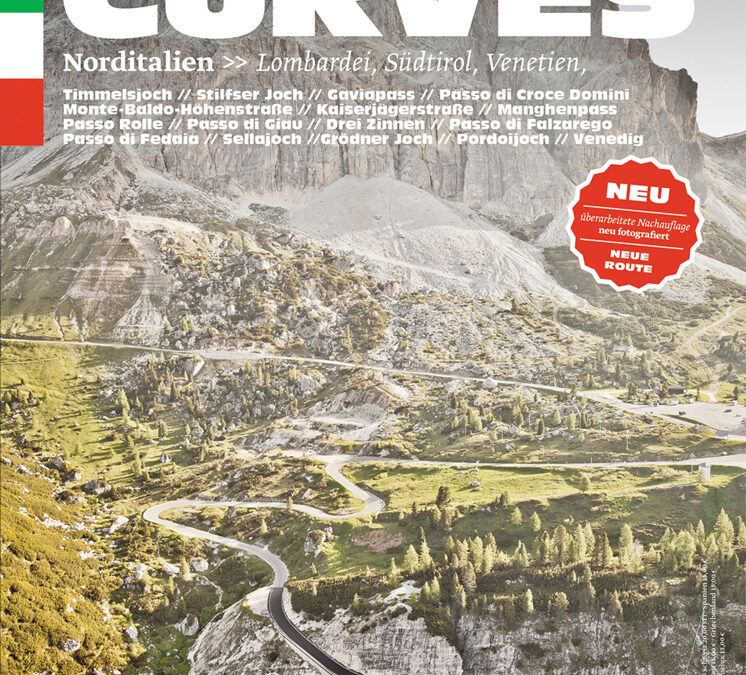
Curves: Northern Italy: Lombardy, South Tyrol, Veneto portrays the most beautiful passes of Northern Italy. Starting at the Timmelsjoch, heading south to Lake Garda, and then east to the Three Peaks in South Tyrol, this book will lead you on a stunning journey through some of Northern Italy’s most beautiful roadway scenescapes. Among the special highlights are the Gavia Pass, the Monte Baldo high alpine road and the Three Peaks. Stefan Bogner shot the atmospheric photos – some of them from a helicopter – to capture the full magnificence of the landscape. In addition to full-color photography, Curves is also a useful travel guide, offering tips for restaurants and hotels along the route.
Text in English and German.

By producing the A300—the first twin-jet, wide-body airliner in the world—the European Airbus consortium succeeded in joining the league of leading aircraft makers. The path was both rocky and exciting. Filled with detailed text, including historical, technological, and flight information, as well as colorful photos, this volume provides a fascinating insight into the history of commercial aviation. The first aircraft designed, built, and sold by Airbus, the A300 airliner debuted in 1974 with Air France and was in constant service throughout the world. Among the many past and present airlines flying the A300/310 are Air Hong Kong, Air France, Air India, American, China Airlines, Eastern, EgyptAir, FedEx, Finnair, Iberia, Korean Air, Pan Am, SAS, UPS, and many others. Though it is no longer produced, examples of the aircraft still fly today.
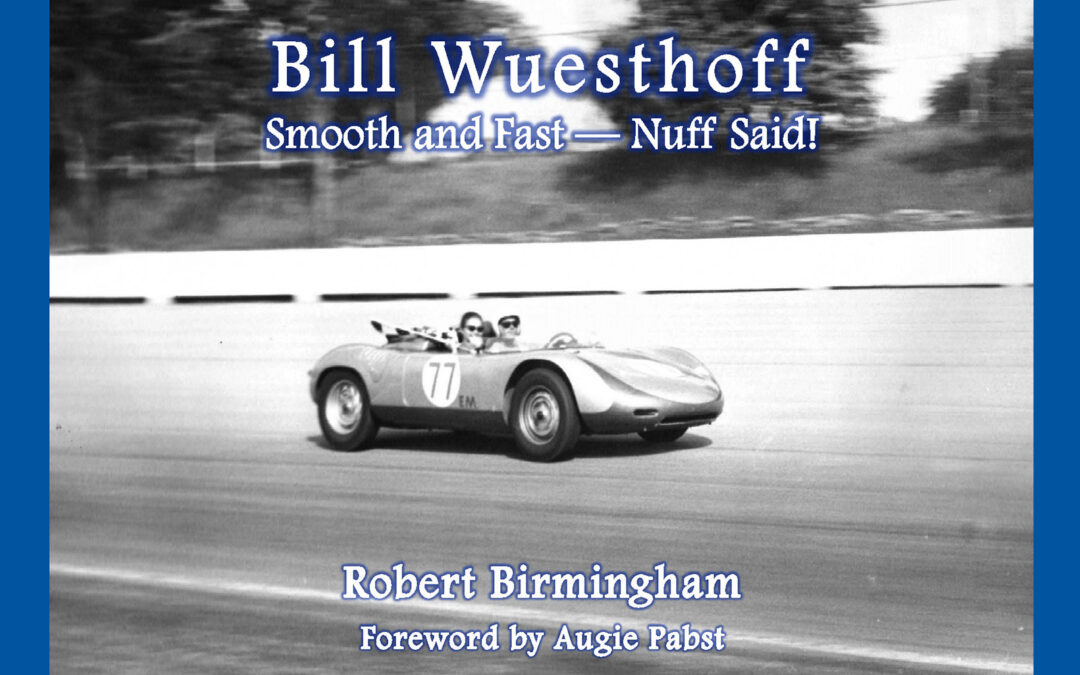
Bill Wuesthoff was among America’s best sports car racers beginning in the mid-1950s and culminating in 1964 after winning the United States Road Racing Championship, USRRC Under 2-liter title. Throughout his ten years competing, Bill kept a low profile as could be expected from someone who enjoyed the battle but shunned the spotlight.
Robert Birmingham’s personal relationship with Bill Wuesthoff dates back to 1959 and as much as anyone today, recalls Bill’s “smooth and fast” competitions from Sebring and Pensacola, Florida, Watkins Glen and Bridgehampton in the east, to Riverside, Laguna Seca, California and Continental Divide in Colorado out west and countless road-racing venues in between. Internationally, he competed at Mosport, Canada, at Nürburgring in Germany, and in Nassau for the popular yearend Speed Week series.
Bill enjoyed success co-driving with his long time close personal friend Augie Pabst, also with Harry Heuer, Chuck Dietrich, Jim Jeffords, Fred Gamble, Bruce Jennings, Frank Rand, and Joe Buzzetta, all nationally ranked competitors of that era. Team car owners included Heuer’s Meister Bräuser Scarab team, Luigi Chinetti’s North American Racing Team, Ollie Schmidt, Carl Haas, Camarodi USA, and Eddie Weschler.
A brief history of Bill’s relationship with to automobiles began at a very early age, stemming from his father who was an early Milwaukee Region SCCA member. Post-racing activities centered on automobiles, his professional business, and sons’ Karl and Lee’s ten years of highly competitive off-road racing.
Many never-before-published photographs, together with numerous documents and other race-related mementos, total over 150, along with Bill’s ten-year race history. In recent years, there has been a growing interest in the recovery of long-forgotten sports car events, tracks and of course, competitors of the 1950s and 1960s. Smooth and Fast, Nuff Said! will be a wonderful addition to any early motorsports collection.
Full color, hardcover coffee table book.
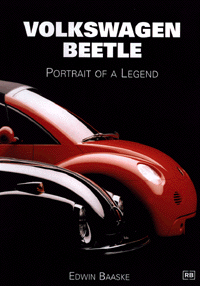
A cultural history of the Volkswagen Beetle as told through historical photographs, many never before published in the U.S. From the birth of the Beetle in wartime Germany through the development of the New Beetle prototype, Volkswagen Beetle: Portrait of a Legend celebrates a lighthearted, unusual view of the most successful automobile in history.
This book is not a “how to identify your Beetle” book, nor is it a year-by-year charting of model changes. Rather, through other people’s experiences of the car, it allows readers to recall their own fond memories of what it was really like to own a Beetle in its heyday.
Features:
- Unique and unusual photographs, many never before seen in a book published in this country, depicting the integration of the Beetle into all facets of life
- Up-to-date information, including coverage of the Concept 1 Beetle, presented in an appealing high-quality, full color, hardcover format



















